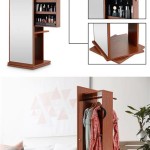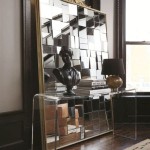The Enduring Appeal of the Vintage Starburst Mirror
The vintage starburst mirror, also known as a sunburst mirror, is a decorative object characterized by a central reflective surface surrounded by radiating spokes or rays. These rays, typically made of metal, wood, or resin, emulate the appearance of a stylized sun. The mirror gained significant popularity during the mid-century modern era (roughly 1945-1969), becoming a defining element of interior design during that time. Its inherent ability to add visual interest, reflect light, and serve as a captivating focal point has contributed to its continued desirability among collectors and interior design enthusiasts.
Originally, the starburst motif was associated with more formal and ornate designs, often crafted from precious metals and adorned with intricate detailing. However, the mid-century modern interpretation embraced a more streamlined and accessible aesthetic. Designers favored simpler materials, such as brass-plated metal, painted wood, and molded plastic, making the starburst mirror more readily available to a wider audience. The focus shifted towards geometric forms and clean lines, reflecting the broader design principles of the era.
Today, vintage starburst mirrors are highly sought after in the vintage and antique markets. Their value is determined by several factors, including the material, size, condition, rarity, and the designer or manufacturer, if known. Authentic mid-century modern examples command higher prices, particularly those in excellent condition and with documented provenance. The aesthetic adaptability of the starburst mirror allows it to seamlessly integrate into a variety of decorating styles, from bohemian and eclectic to minimalist and contemporary, further contributing to its enduring appeal.
Key Point 1: Historical Context and Design Evolution
Understanding the historical context of the vintage starburst mirror is crucial to appreciating its design evolution. While the starburst motif has ancient origins, appearing in various cultures across different periods, its modern interpretation is largely rooted in the post-World War II era. The optimism and forward-thinking ethos of this period directly influenced design trends, favoring bold geometric forms and reflective surfaces.
The mid-century modern movement, characterized by its emphasis on functionality, simplicity, and accessibility, provided the perfect platform for the starburst mirror to flourish. Designers sought to create objects that were both aesthetically pleasing and practical, reflecting the values of a rapidly modernizing society. The starburst mirror met these criteria, offering a relatively affordable and visually impactful way to enhance interior spaces. The design varied greatly, from mirrors with sleek, minimalist rays to those with more elaborate and sculptural forms. Some designs incorporated organic shapes and textures, while others adhered to strict geometric principles.
Notable designers and manufacturers contributed to the popularity of the starburst mirror. Companies like Syroco, known for their molded plastic designs, produced widely accessible versions, while smaller workshops and individual artisans created more unique and handcrafted pieces. The use of new materials and manufacturing techniques allowed for greater experimentation and innovation, leading to a diverse range of styles and variations.
The decline of the mid-century modern movement in the late 1960s did not diminish the appeal of the starburst mirror. It continued to be produced and appreciated, albeit with some modifications in design and materials. During the 1970s and 1980s, more ornate and glamorous versions emerged, often incorporating metallic finishes and mirrored accents. However, the original mid-century modern examples remained highly prized for their timeless elegance and historical significance.
Key Point 2: Identifying and Evaluating Vintage Starburst Mirrors
Identifying and evaluating vintage starburst mirrors requires a keen eye and a basic understanding of design characteristics and manufacturing techniques. Several factors contribute to the value and authenticity of these objects. Material, construction, condition, size, and provenance all play significant roles in determining their worth. It is imperative to examine the mirror meticulously to assess its originality and assess its overall quality.
The materials used in the construction of the mirror are key indicators of its age and origin. Mid-century modern examples typically feature brass-plated metal, painted wood, molded plastic (such as Syroco’s products), or combinations of these materials. Older examples may be crafted from solid brass or other precious metals, while more recent reproductions may utilize cheaper materials like chrome or painted steel. The quality of the materials and the craftsmanship are important considerations. Examine the finish for signs of wear, oxidation, or damage. Look for hallmarks or maker's marks, which can provide valuable information about the manufacturer and date of production.
The construction of the mirror should also be carefully examined. Authentic mid-century modern examples are typically well-made and durable. The rays should be securely attached to the central mirror and the frame. Look for signs of repair or modification, which can detract from the value of the mirror. The presence of original hardware, such as mounting brackets and screws, is also a good indicator of authenticity.
The condition of the mirror is a crucial factor in determining its value. Minor scratches and imperfections are to be expected in vintage items, but significant damage can significantly reduce its worth. Examine the mirror for cracks, chips, or discoloration. Inspect the rays for bends, breaks, or missing pieces. The frame should be sturdy and free from significant damage. Consider the overall aesthetic appeal of the mirror. Does it retain its original luster and shine? Is it visually appealing and well-proportioned?
Provenance, or the documented history of ownership, can significantly impact the value of a vintage starburst mirror. If the mirror can be traced back to its original owner or to a known designer or manufacturer, it will likely command a higher price. Documentation, such as receipts, photographs, or letters, can help to establish the provenance of the mirror. Even without formal documentation, information about the mirror's history and origin can enhance its appeal and desirability.
Key Point 3: Incorporating Vintage Starburst Mirrors into Modern Interiors
The vintage starburst mirror possesses a remarkable ability to complement a wide range of interior design styles. Its versatility lies in its iconic form, which can serve as a bold statement piece or a subtle accent, depending on its size, material, and placement. Whether the goal is to create a mid-century modern-inspired space or to add a touch of vintage charm to a contemporary setting, the starburst mirror can be seamlessly integrated into various design schemes.
In mid-century modern interiors, the starburst mirror is a natural fit. It can be hung above a credenza, console table, or fireplace mantel to create a focal point. Pair it with other iconic mid-century modern furniture pieces, such as Eames chairs, Danish modern sofas, and geometric patterned rugs, to create a cohesive and authentic aesthetic. The mirror's reflective surface will enhance the sense of space and light, making the room feel brighter and more open.
In contemporary interiors, the vintage starburst mirror can add a touch of warmth and personality. It can be used to soften the clean lines and minimalist aesthetic of modern spaces. Hang it above a simple floating shelf or next to a gallery wall to create a visually interesting and unexpected juxtaposition. Choose a mirror with a metallic finish, such as brass or gold, to add a touch of glamour and sophistication. Consider the scale of the mirror in relation to the surrounding furniture and accessories. A larger mirror can serve as a dramatic statement piece, while a smaller mirror can be used as a subtle accent.
For bohemian and eclectic interiors, the vintage starburst mirror can contribute to the overall sense of whimsy and individuality. It can be combined with other vintage and antique objects, such as tapestries, ceramics, and textiles, to create a layered and visually rich environment. Choose a mirror with a unique or unusual design to add a touch of personality. Consider layering multiple mirrors of different sizes and shapes to create a dynamic and visually engaging display.
The placement of the starburst mirror is crucial to its impact on the overall design of the space. Consider the light sources in the room and position the mirror to maximize the reflection of natural light. Avoid placing the mirror directly opposite a window, as this can create glare and detract from its aesthetic appeal. Instead, position it at an angle to capture and reflect light throughout the room. Experiment with different heights and angles to find the most visually pleasing and effective placement. The vintage starburst mirror is an enduring symbol of mid-century modern design, offering a timeless and versatile way to enhance any interior space.

30 Glamorous Sunburst Mirror Starburst Wall Decor Sun Gold Home
Gold Sunburst Wall Mirror The Forest Co

Vintage Starburst Mirror By Twos Company At 1stdibs Antique Two S Retro

Vintage French Metal Starburst Mirror 1940s For At Pamono

Sunburst Mirrors The Antiques Diva

29 Gold Glamorous Sunburst Mirror With Small Mirrors

1960s French Vintage Three Layered Sunburst Mirror With Convex Plate For At 1stdibs Sun Starburst Antique

Vintage Mcm Sunburst Starburst Mirror Antique Gold Black Hollywood Regency

30 Glamorous Sunburst Mirror Starburst Wall Decor Sun Gold Home

Vintage French Double Starburst Mirror With Antique Gold Finish Foxglove Antiques Galleries








